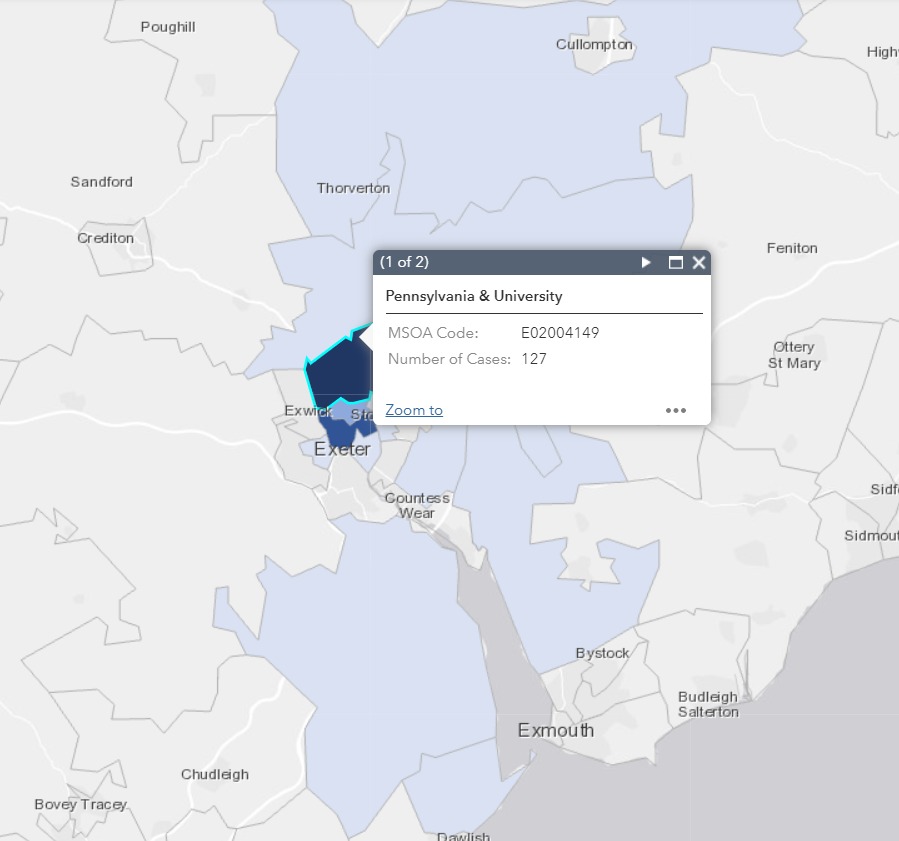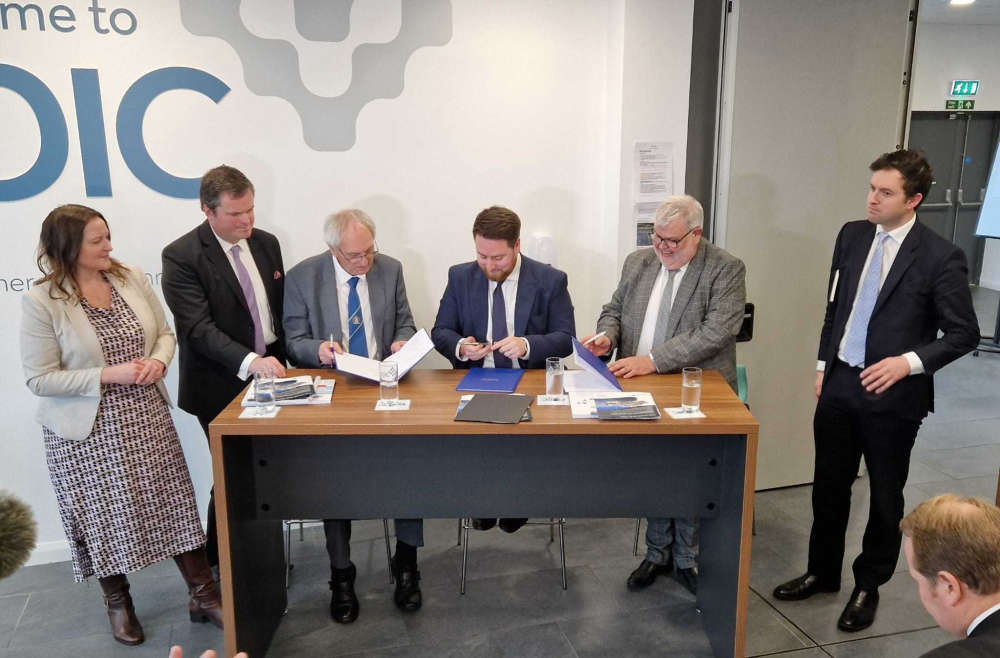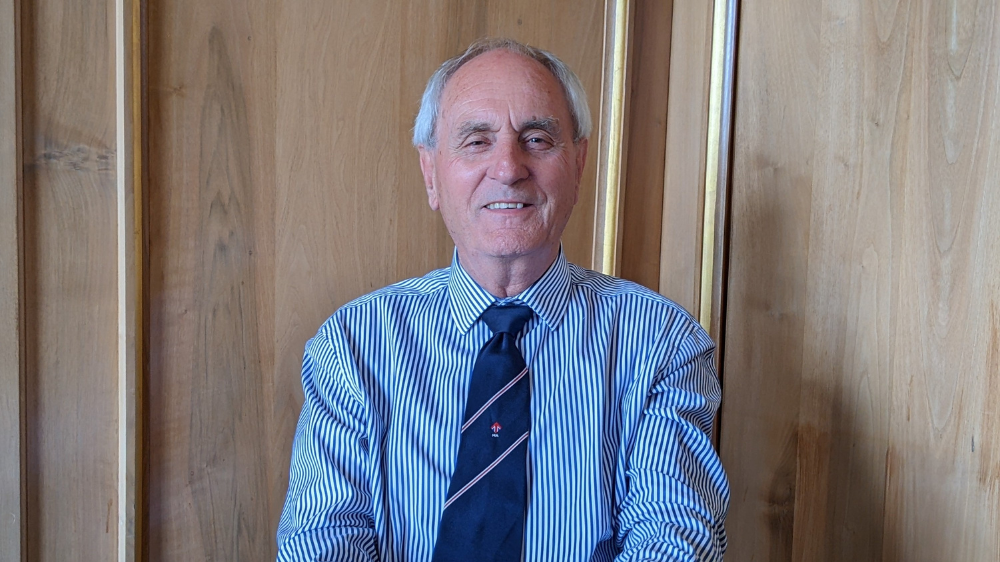
Calls for "renewed effort"
Exeter is the south of England's coronavirus hotspot, and has the 17th highest infection rate in England according to new figures released on Monday afternoon. In the seven days to Friday 2 October, the city had 345 new confirmed cases, up from 74 in the previous week.
Now all Devon residents – especially the late0teens to mid-twenties age group – are being urged to make renewed efforts to reduce the spread of the disease.
It's thought that a proportion of the cases were from tests taken from last week because of the widely reported technical issue over which the government has now launched an investigation. More tests are also now being undertaken, with Exeter University having a dedicated facility for doing so. However, public health practitioners believe cases a rising dramatically. Dr Virginia Pearson, Director of Public Health Devon, says the rise in Exeter requires attention, but that it is still largely within the University of Exeter student population.
She said that the rise in non-university student cases in Exeter mirrors similar increases across the county, suggesting little evidence so far of spread into neighbouring communities.
On Monday, it was reported that a member of staff at Montgomery Primary School in Exeter had contracted covid-19 and is self-isolating. Children in nursery and reception have been asked to stay at home until 15 October.
Current covid cluster maps, which cover the period from 25 September to 1 October 1, show nine areas of Exeter with at least three cases. New clusters of three in Heavitree West & Polsloe, St Thomas East and Mincinglake & Beacon Heath were added to the map on Monday, with four in St Leonard’s, five in Pinhoe and Whipton North, seven in Middlemoor & Sowton, and then in the student heavy areas, 23 in St James’s Park & Hoopern, 31 in Central Exeter and 127 in Pennsylvania & University.
Further clusters of cases on the outskirts of Exeter include Cranbrook, Broadclyst & Stoke Canon (5), Clyst, Exton & Lympstone (6), Starcross & Exminster (4), with other clusters in Devon of Bradninch, Silverton & Thorverton (5), Dawlish North (3), Teignmouth South (4), Ashburton and Buckfastleigh (3), Tavistock (3) and Bere Alston, Buckland Monachorum & Yelverton (4). The cluster in South Molton though has dropped off the map.
Over the last three days, there have been 33 new cases confirmed in East Devon, 285 in Exeter, 14 in Mid Devon, nine in North Devon, ten in the South Hams, 21 in Torbay, 24 in Teignbridge, six in Torridge and seven in West Devon, with a further 110 in Cornwall and 62 in Plymouth – although with the data lag, many of the cases are from nearly, if not, more than, a week ago.
Dr Pearson said: “We expect to see confirmed cases continue to rise while the national reporting is refreshed. Despite the rise, the county of Devon still has fewer confirmed cases than most other local authority areas of comparable population and density.
“We have been working very closely with Public Health England, the University of Exeter and Exeter City Council, and already measures have been taken to reduce the wider spread of infection. They include restricting movement between University student households in the city, and increased testing capacity for their students and staff. Analysis to date has shown infection spreading in social settings and in and between student households and accommodation, and we are continuing to work with the University to reduce risk in that context.
“To avoid far tighter restrictions on our movements, we must all play our part. If a person in your household tests positive, all members of the household must self-isolate for the full 14 days. Other members of the household do not need to be tested unless they develop symptoms.
“If you are contacted by NHS Test and Trace because you have been in close contact with a confirmed case, advising you to self-isolate for 14 days, do so for the full duration. Self-isolation properly is vital to reducing the risk of infection spreading. There must not be short cuts.
“These rules require us all to pay attention and to take individual and collective responsibility. The sooner we control the spread of the infection, the sooner we can expect restrictions to loosen. We are monitoring the latest data very closely so that we can be quick to respond and can assess whether the restrictions currently in place are sufficient, or whether additional tighter measures are required.”
 Young voices barely registered in devolution consultation
Young voices barely registered in devolution consultation
 New pledge on South Hams Freeport funding
New pledge on South Hams Freeport funding
 Axminster children connect with space station
Axminster children connect with space station
 East Devon should get new CEO
East Devon should get new CEO
 Long-serving County Council leader steps down
Long-serving County Council leader steps down
 Football club changes kit to honor former player
Football club changes kit to honor former player
